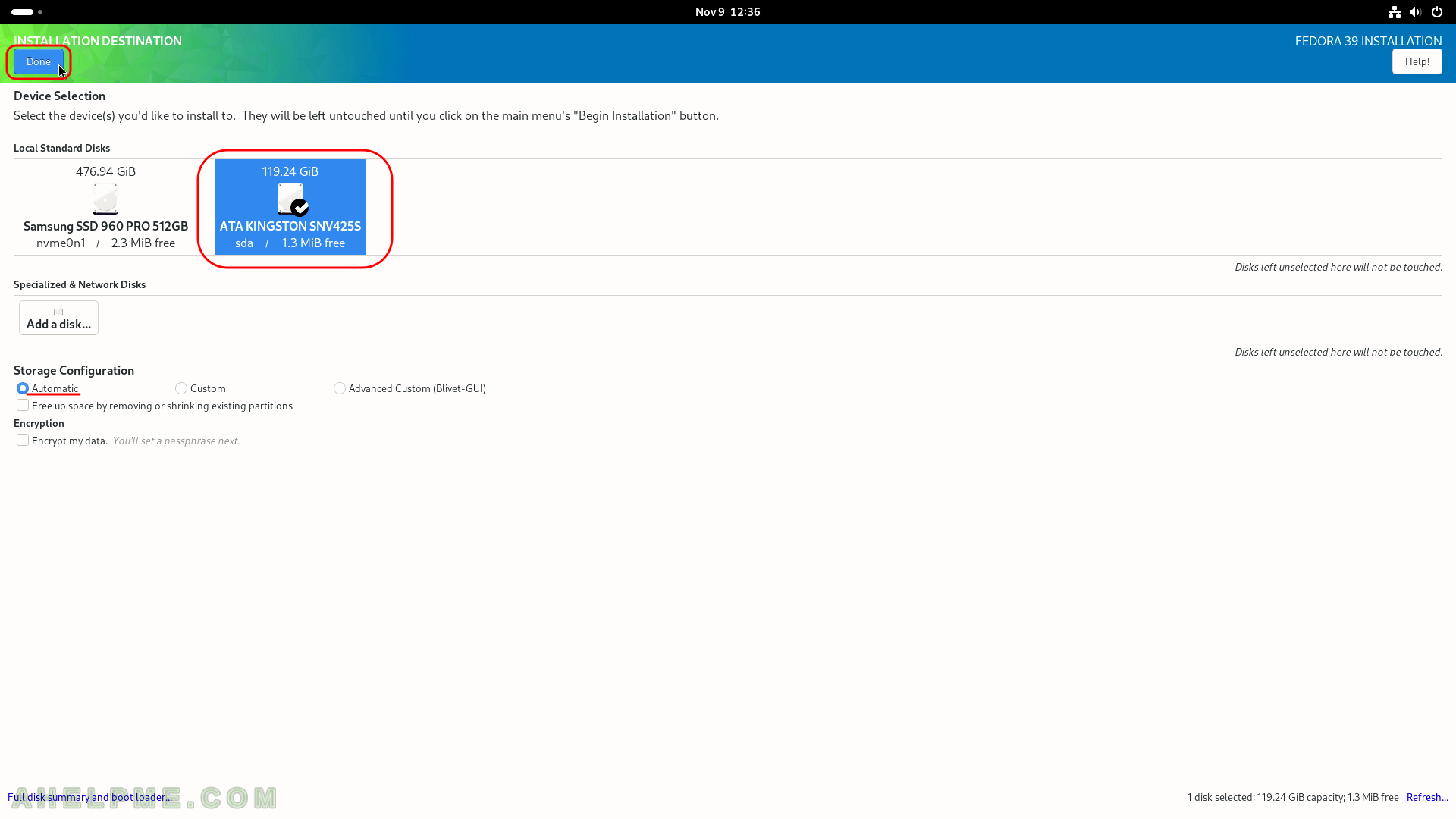This article will show the simple steps of installing a modern Linux Distribution like Fedora 39 Workstation Edition with Gnome for the graphical user interface. First, it is offered the basic steps for installing the Operating system and then there are some screenshots of the installed system and its look and feel. Soon another article will show more screenshots of the installed and working Fedora 39 (Gnome and KDE plasma) – so the user may decide which of them to try first.
This is the most straightforward setup. One hard disk device in the system is installed, which is detected as sda and the entire disk will be used for the installation of Fedora Workstation 39. All disk information in sda disk device will be permanently deleted by the installation wizard!
The Fedora 39 Workstation comes with
- Xorg X11 server – 1.20.14 and Xorg X11 server XWayland 23.2.2 is used by default
- GNOME (the GUI) – 45.0
- linux kernel – 6.5.6
Check out our review article about what GUI software is included in – Review of freshly installed Fedora 39 Workstation (Gnome GUI).
There are previous installations howto articles for the older Fedora 38 – Install Fedora Workstation 38 (Gnome GUI), Install Fedora Workstation 37 (Gnome GUI), Review of freshly installed Fedora 36 Workstation (Gnome GUI), Install Fedora Workstation 31 (Gnome GUI), Install Fedora Workstation 30 (Gnome GUI).
The following ISO is used for the installation process: https://download.fedoraproject.org/pub/fedora/linux/releases/39/Workstation/x86_64/iso/Fedora-Workstation-Live-x86_64-39-1.5.iso
It is a LIVE image so you can try it before installing. The easiest way is just to download the image and burn it to a DVD disk (or make a bootable USB flash drive) and then follow the installation below.
The simplest way to make a bootable USB drive is to just use the Linux command dd. First, download the ISO file above and then plug the USB drive into the computer and find out the device name, it should be something of /dev/sda or /dev/sdb or /dev/sdc (execute the dmesg command in the console and check the last lines for the USB drive detection and its device name like /dev/sd?). After knowing the USB device name issue the dd command to overwrite it with the ISO. Note, all data will be lost if you use the following command with the device name mentioned in the command line.
myuser@mydesktop ~ # dd if=/mnt/media/OS/Fedora/Fedora-Workstation-Live-x86_64-39-1.5.iso of=/dev/sdc bs=8M status=progress oflag=direct 2013265920 bytes (2.0 GB, 1.9 GiB) copied, 17 s, 118 MB/s2129752064 bytes (2.1 GB, 2.0 GiB) copied, 17.9778 s, 118 MB/s 253+1 records in 253+1 records out 2129752064 bytes (2.1 GB, 2.0 GiB) copied, 18.0187 s, 118 MB/s
The USB flash drive should have at least 4G space. Using dd command will overwrite the data on the USB drive without warning or confirmation!
The user can check what device name the just-plugged USB Drive has with dmesg console command:
myuser@mydesktop ~ # dmesg|tail -n 17 [90470.220142] usb 2-1: new high-speed USB device number 7 using xhci_hcd [90470.361406] usb 2-1: New USB device found, idVendor=1f75, idProduct=0888, bcdDevice= 0.15 [90470.361411] usb 2-1: New USB device strings: Mfr=1, Product=2, SerialNumber=3 [90470.361413] usb 2-1: Product: IS888 USB3.0 to SATA bridge [90470.361414] usb 2-1: Manufacturer: Innostor Technology [90470.361415] usb 2-1: SerialNumber: 088810000000 [90470.364298] usb-storage 2-1:1.0: USB Mass Storage device detected [90470.364427] scsi host5: usb-storage 2-1:1.0 [90471.387214] scsi 5:0:0:0: Direct-Access KINGSTON SNV425S2128GB PQ: 0 ANSI: 0 [90471.387439] sd 5:0:0:0: Attached scsi generic sg2 type 0 [90471.387649] sd 5:0:0:0: [sdc] 250069680 512-byte logical blocks: (128 GB/119 GiB) [90471.387970] sd 5:0:0:0: [sdc] Write Protect is off [90471.387974] sd 5:0:0:0: [sdc] Mode Sense: 03 00 00 00 [90471.388288] sd 5:0:0:0: [sdc] No Caching mode page found [90471.388290] sd 5:0:0:0: [sdc] Assuming drive cache: write through [90471.395432] sdc: sdc1 sdc2 [90471.395543] sd 5:0:0:0: [sdc] Attached SCSI disk
The just-plugged USB drive is attached to the system with the device name /dev/sdc.
SCREENSHOT 1) Boot from the UEFI USB device.
It is the same as the CD/DVD removable drive. Choose the UEFI USB drive to boot the live installation.

SCREENSHOT 2) Select to “Start Fedora-Workstation-Live 39” and hit enter.
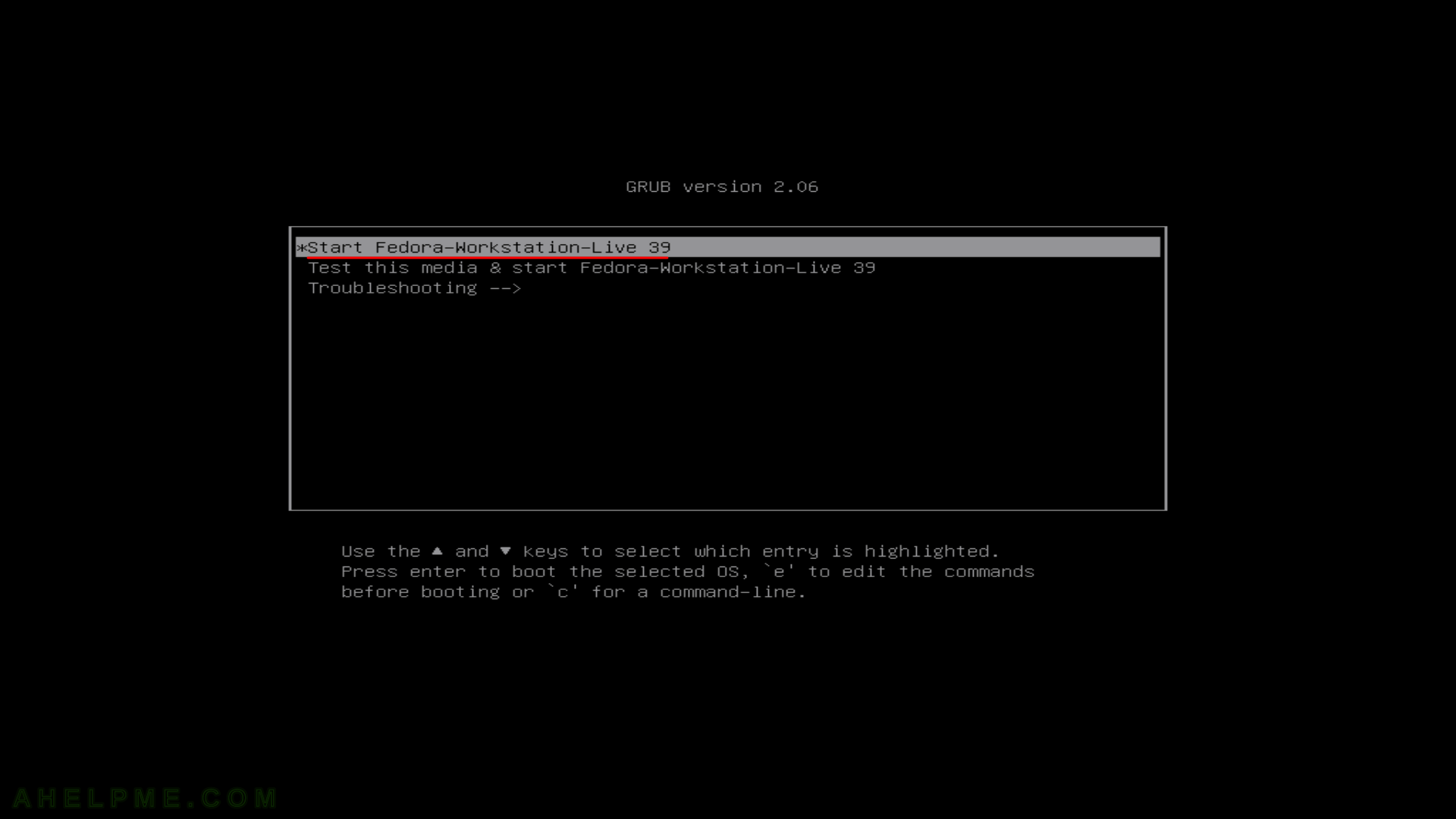
SCREENSHOT 3) The loading screen of Fedora-Workstation-Live 39.

SCREENSHOT 4) Auto-logged in the Gnome shell Overview of Fedora-Workstation-Live 39.
Click on the window to bring it on focus.
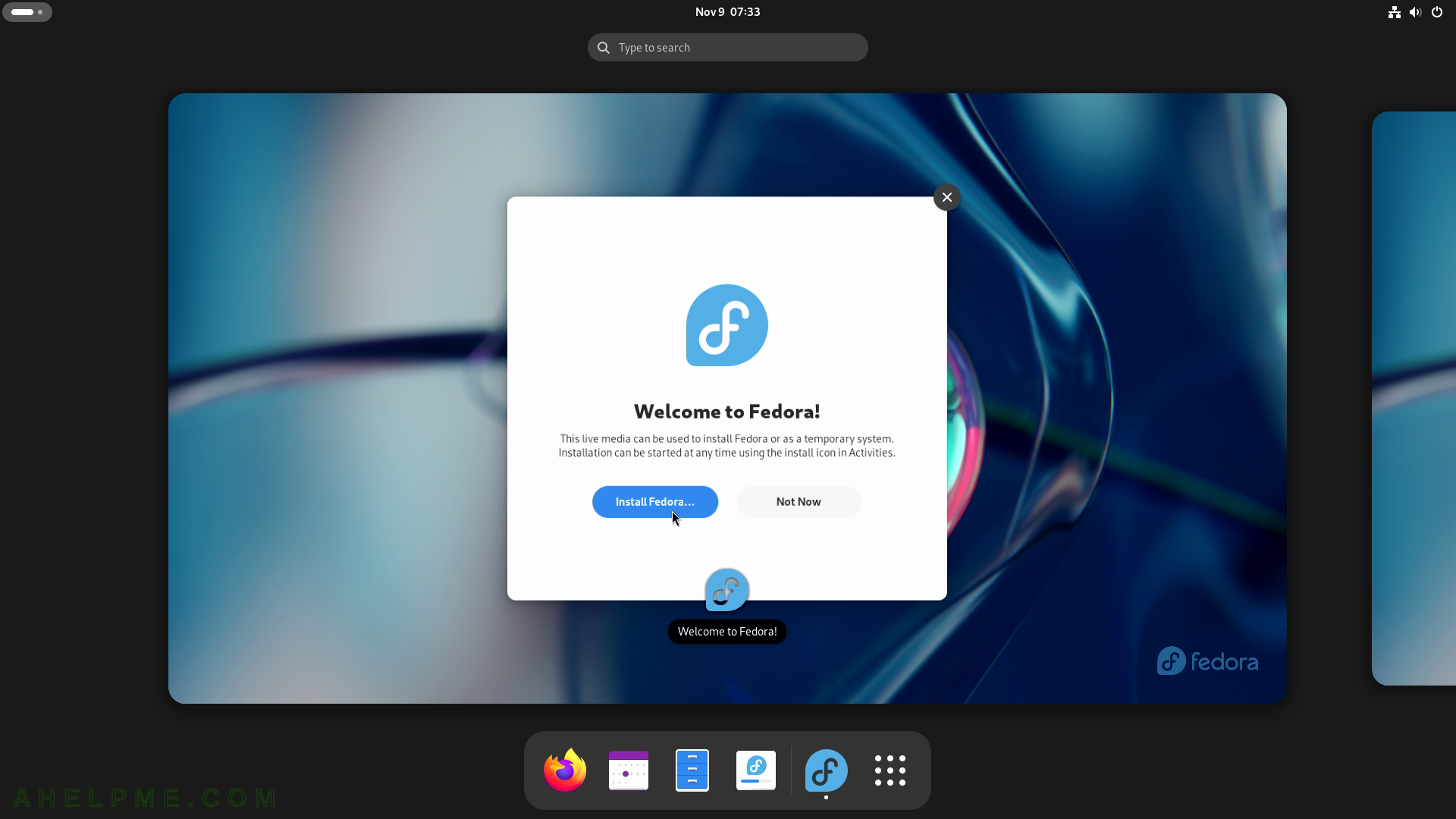
SCREENSHOT 5) Click on “Install Fedora…” to initiate the installation process of Fedora Workstation 39 (gnome).
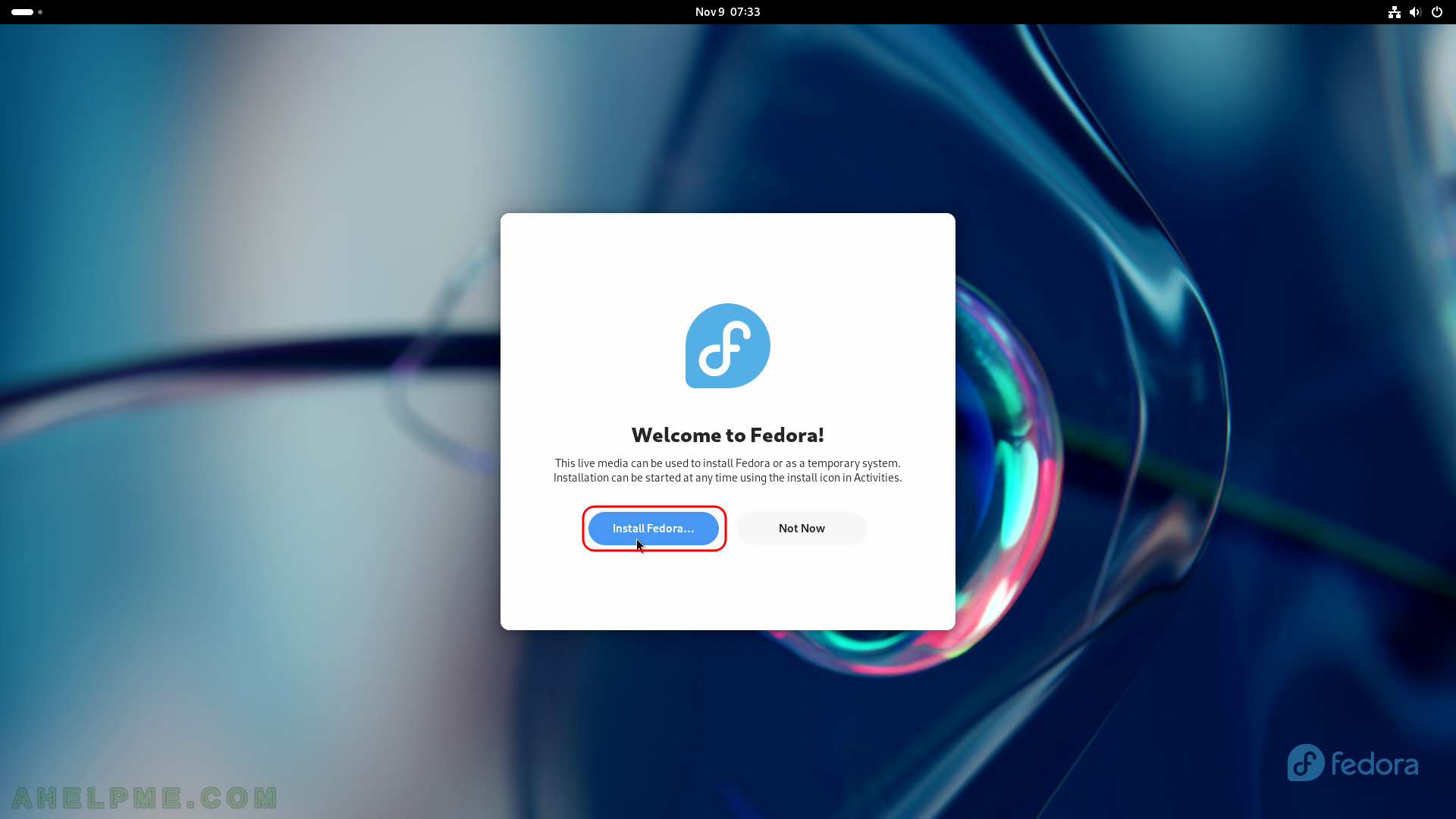
SCREENSHOT 6) Choose the Language during the installation process and by default on first login after the installation.
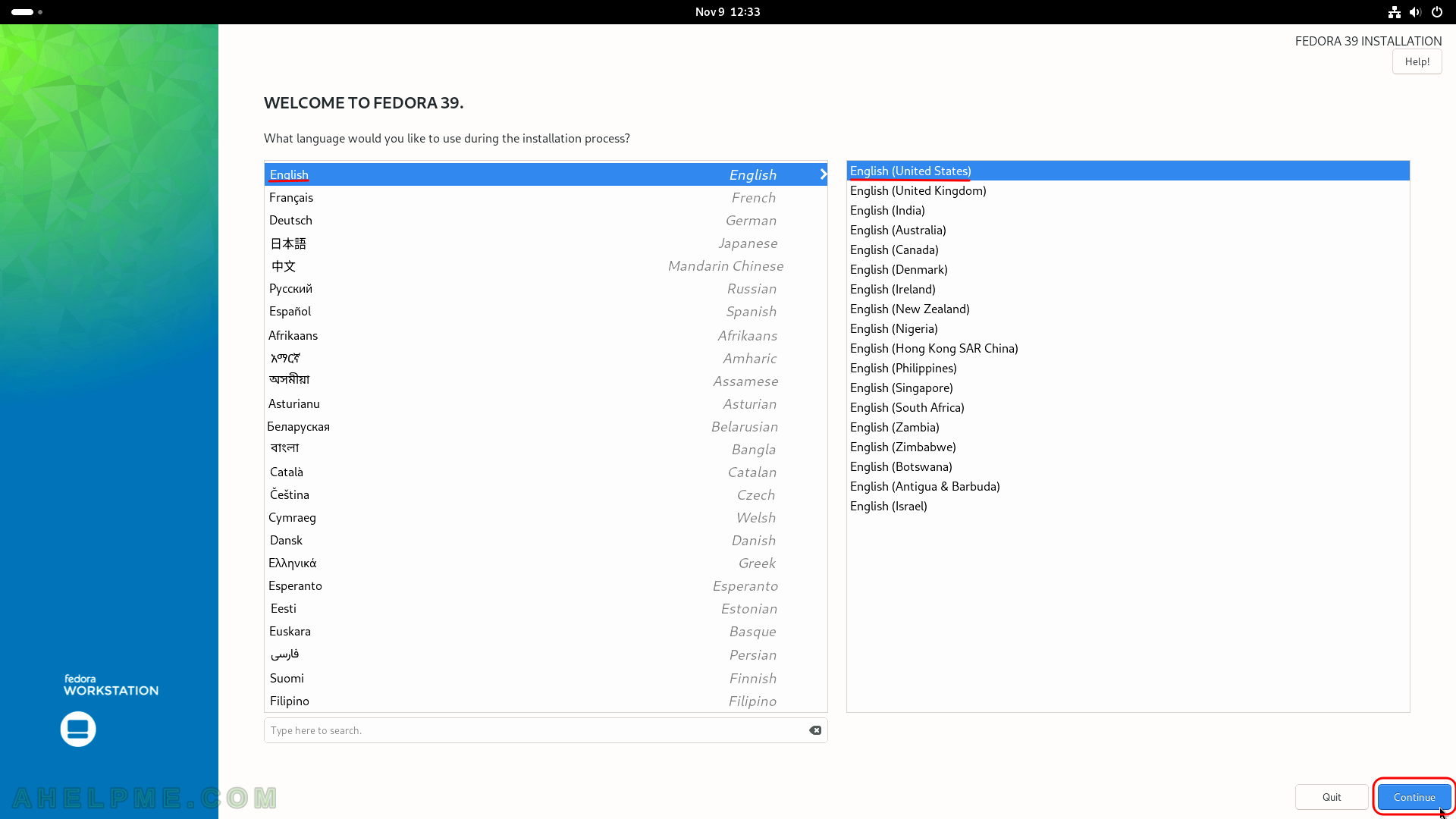
SCREENSHOT 7) Click on “Time & Date” to choose the right time zone for this computer.
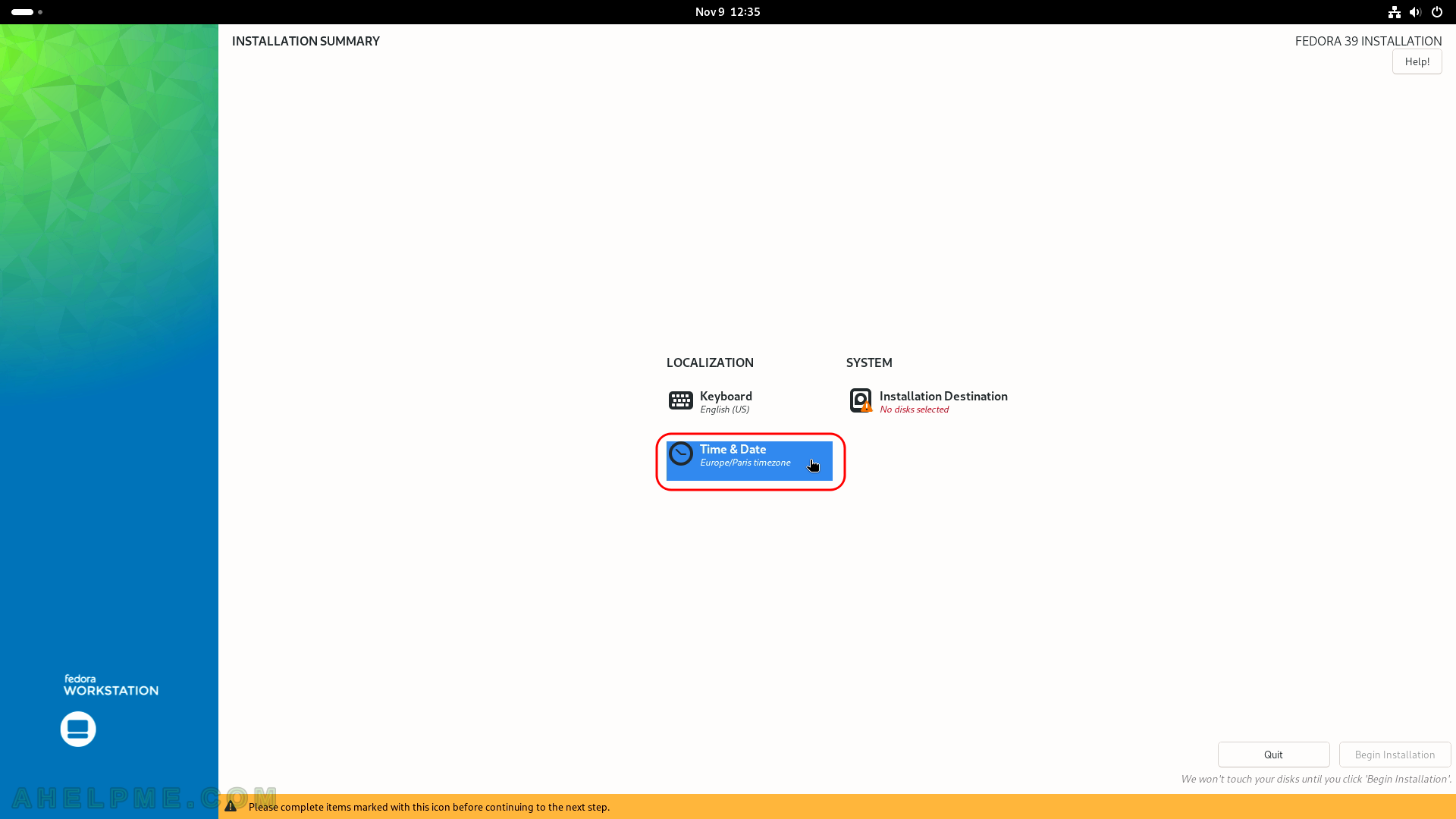
SCREENSHOT 8) Select your time zone to configure your clock.
Probably the default is ok, the setup tries to auto-detect it. The New York time is selected here. Click on “Continue”.
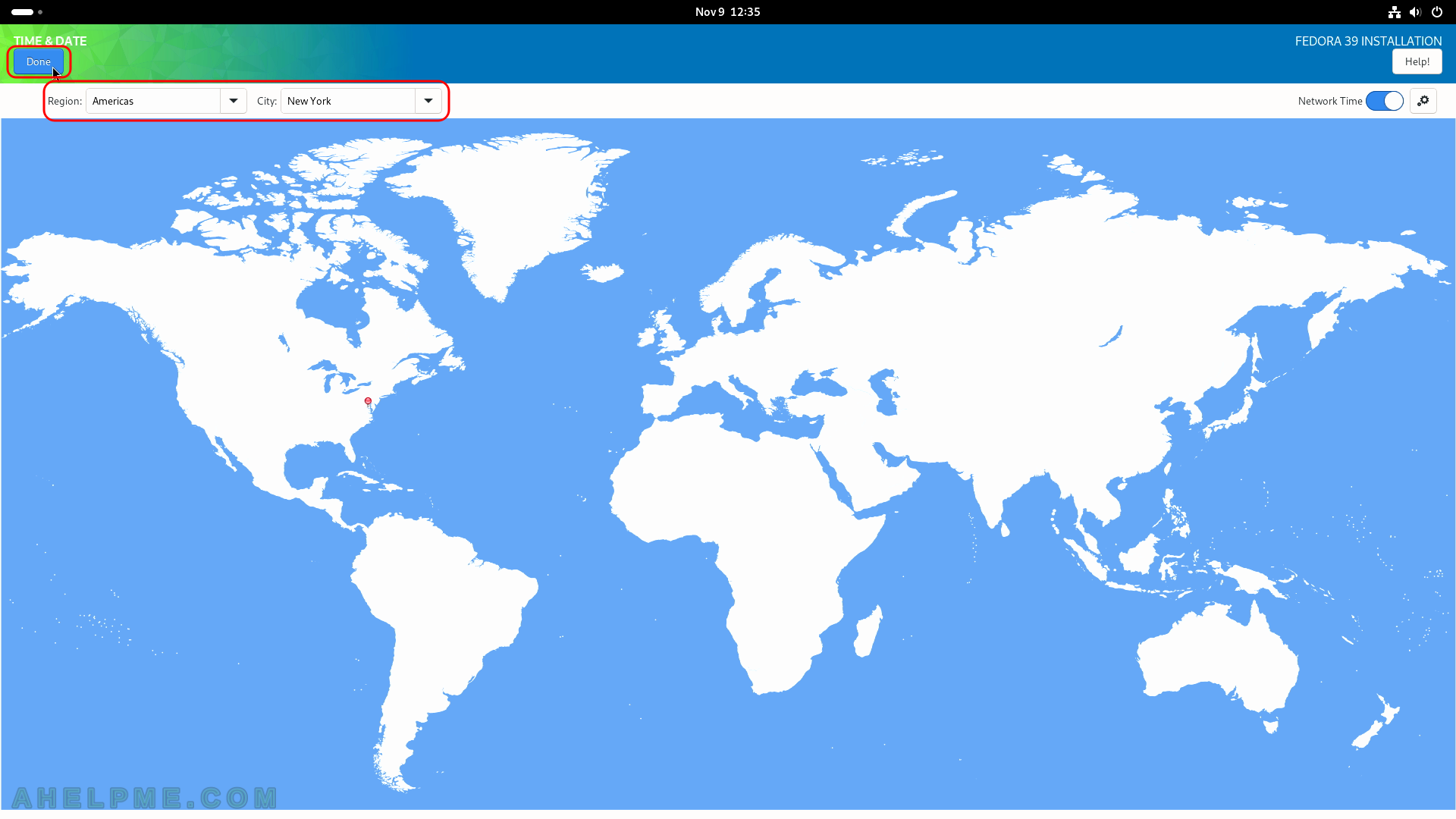
SCREENSHOT 9) A menu to select where to install Fedora Workstation 39.
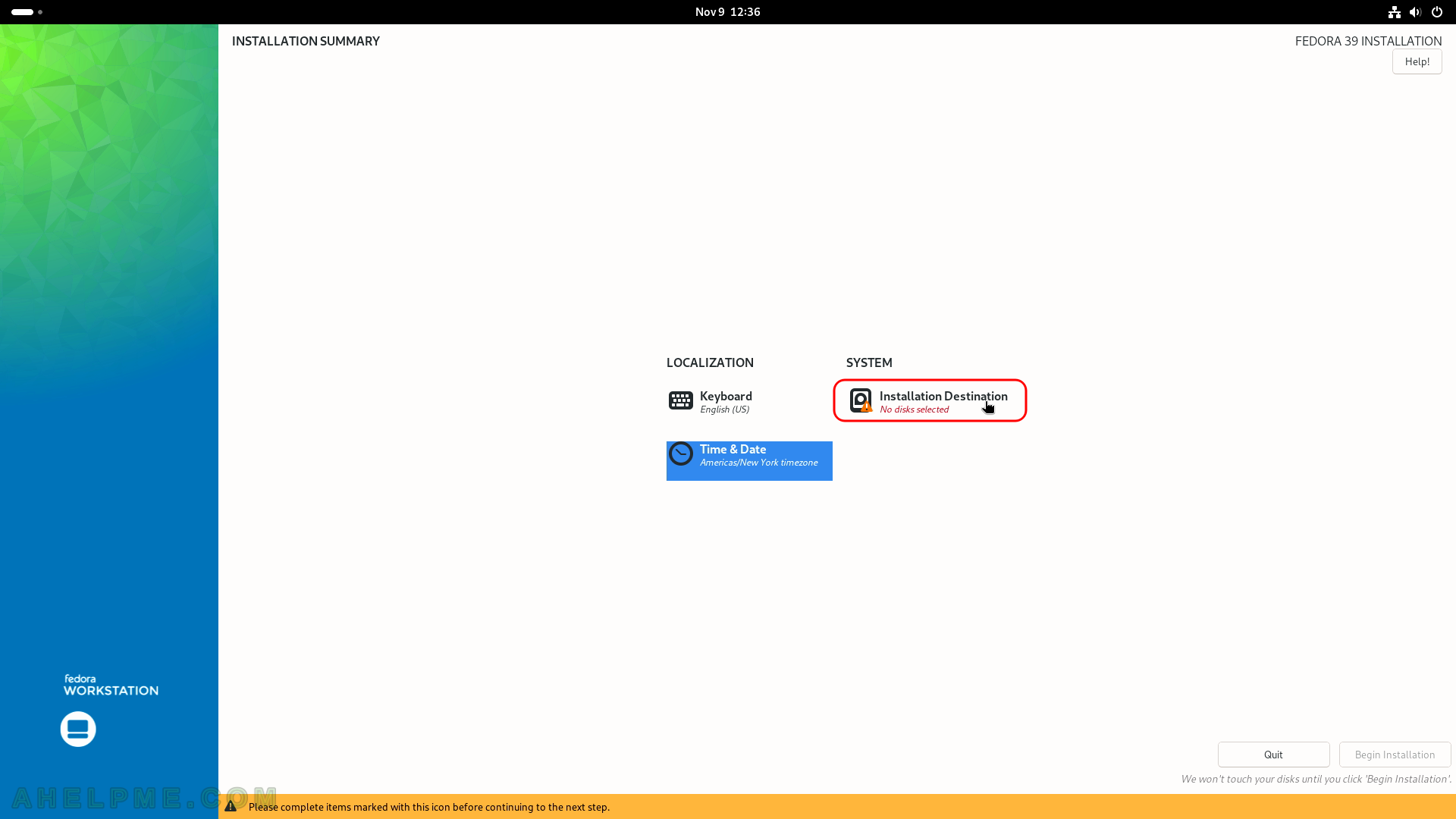
SCREENSHOT 10) As stated before, this article is to show the installation procedure, which installs Fedora Workstation 39 (gnome) on an entire disk, the option “Automatic” for the Storage setup means it will use the whole selected drive for the Fedora Workstation 39.
This way is the easiest one, but be sure the destination disk, where the Fedora will be installed, is going to be completely erased and all data lost! Proceed only if you are sure the disk does not have anything valuable for you. If there are multiple disks the user should select the proper device (SSD/harddisk – sdb, sdc or nvme).
